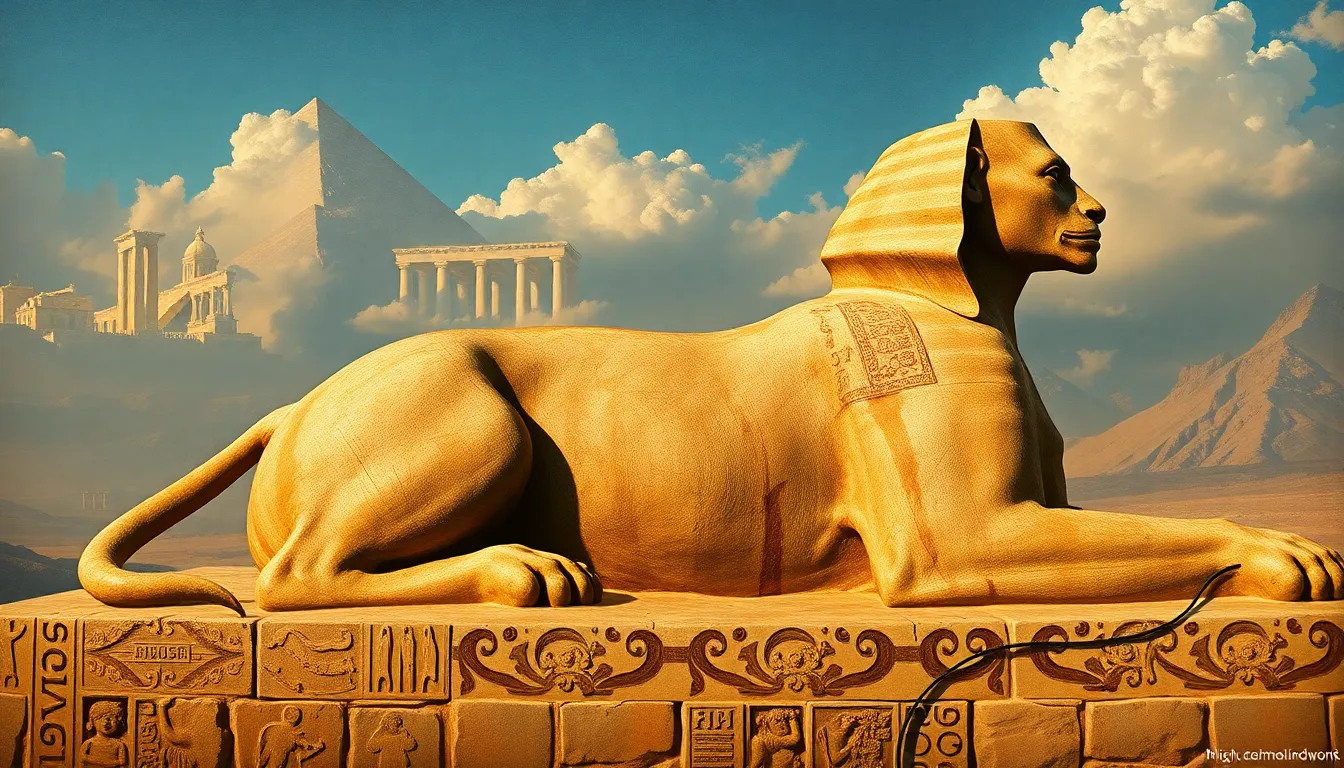The Sphinx and Its Influence on Renaissance Art
I. Introduction
The Sphinx, a mythical creature with the body of a lion and the head of a human, has captivated the imaginations of cultures throughout history. Its historical and cultural significance is profound, as it embodies the mysteries of ancient civilizations, particularly those of Egypt and Greece. This article aims to explore the Sphinx’s impact on Renaissance art, a period marked by a resurgence of interest in classical themes and symbols.
II. The Sphinx: A Symbol of Mystery and Power
A. Origins and mythology of the Sphinx
The origins of the Sphinx can be traced back to ancient Egypt, where it was often depicted as a guardian figure. In Egyptian mythology, the Great Sphinx of Giza stands as a testament to the civilization’s architectural prowess and spiritual beliefs. The creature was thought to represent strength, wisdom, and protection.
B. The Sphinx in ancient Egyptian and Greek culture
In Greek mythology, the Sphinx took on a more sinister role. She was known for posing riddles to travelers, devouring those who could not answer correctly. This duality highlights the Sphinx as a symbol of both protection and peril, embodying the complex relationship between knowledge and danger.
III. The Renaissance: A Cultural Reawakening
A. Definition and characteristics of the Renaissance period
The Renaissance, which spanned roughly from the 14th to the 17th century, marked a period of profound cultural, artistic, and intellectual reawakening in Europe. This era was characterized by a renewed interest in classical antiquity, humanism, and the exploration of naturalism in art.
B. The revival of classical themes and symbols in art
- Emphasis on humanism and the human experience.
- Incorporation of classical mythology and symbols.
- Focus on realism, proportion, and perspective in visual arts.
IV. The Sphinx in Renaissance Art: Key Works and Artists
A. Notable artists influenced by the Sphinx
- Leonardo da Vinci: Da Vinci’s fascination with the human form and nature led to interpretations of the Sphinx that blended human emotion with animalistic power.
- Michelangelo: Michelangelo’s sculptures reflect the grandeur and mystery associated with the Sphinx, often integrating its motifs into his work.
B. Analysis of significant artworks featuring Sphinx motifs
Several key artworks from the Renaissance period feature Sphinx motifs, demonstrating the creature’s profound impact:
- The Virgin of the Rocks (Leonardo da Vinci): This painting features a mysterious, enigmatic atmosphere that echoes the symbolism of the Sphinx.
- The Tomb of Julius II (Michelangelo): This monumental work incorporates strong, powerful figures reminiscent of the Sphinx, symbolizing strength and guardianship.
V. Themes and Interpretations
A. The Sphinx as a symbol of enigma and knowledge
The Sphinx’s role as a riddle-poser in Greek mythology has led to its interpretation as a symbol of knowledge and the mysteries of existence. Artists during the Renaissance often depicted the Sphinx in ways that invited viewers to ponder deeper philosophical questions.
B. Representation of power, strength, and guardianship in art
The Sphinx’s lion-body and human head signify a fusion of power and intellect. In Renaissance art, this duality is often used to represent the ideals of strength, wisdom, and protection. The Sphinx serves as a guardian of sacred knowledge and truth, reflecting the values upheld during this cultural reawakening.
VI. The Sphinx’s Influence on Architectural Design
A. Integration of Sphinx imagery in Renaissance architecture
Architects of the Renaissance period often incorporated Sphinx imagery into their designs, drawing on the creature’s associations with mystery and power. This usage helped to create buildings that conveyed a sense of grandeur and historical significance.
B. Examples of buildings and structures inspired by the Sphinx
- The Villa Medici: Located in Rome, this villa features Sphinx motifs in its architecture and garden design, symbolizing wisdom and guardianship.
- The Louvre Museum: The integration of Sphinx sculptures in the museum reflects the melding of ancient and Renaissance aesthetics, showcasing the enduring legacy of the Sphinx.
VII. The Legacy of the Sphinx in Modern Art
A. Continuing influence of Sphinx symbolism in contemporary art
The Sphinx continues to inspire modern artists, who draw upon its rich symbolism to explore themes of knowledge, power, and the unknown. Contemporary interpretations often challenge traditional narratives, offering new perspectives on the Sphinx’s significance.
B. Comparative analysis of Renaissance and modern interpretations
While Renaissance artists often celebrated the Sphinx as a symbol of strength and mystery, modern artists may depict it in more ambiguous or critical contexts, reflecting contemporary anxieties about knowledge and authority. This evolution illustrates the Sphinx’s adaptability as a cultural icon.
VIII. Conclusion
In summary, the Sphinx has had a profound impact on Renaissance art, serving as a symbol of mystery, knowledge, power, and guardianship. Through the works of influential artists like Leonardo da Vinci and Michelangelo, the Sphinx’s imagery has been woven into the fabric of artistic expression during the Renaissance. Its legacy endures in modern art, where it continues to inspire and provoke thought. The Sphinx remains a testament to humanity’s enduring quest for understanding and the intricate relationship between knowledge and mystery.




